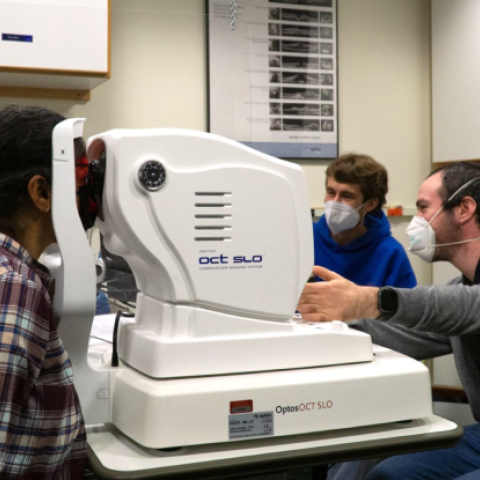

- Principal Investigator:
- James Coughlan
CamIO (short for “Camera Input-Output”) is a system that enables blind and visually impaired individuals to interact with physical objects (such as documents, maps, devices, and 3D models) by providing real-time audio feedback based on the location that they are touching.
CamIO currently works on iOS using the built-in camera and an inexpensive hand-held stylus, made out of materials such as 3D-printed plastic, paper, or wood.
See a short video demonstration of CamIO here, showing how the user can trigger audio labels by pointing a stylus at "hotspots" on a 3D map of a playground. See the Magic Map project page for more information on this specific application of CamIO. Longer videos explaining how CamIO fits into the Magic Map approach are here: Camio by James Coughlan and CamIO by Brandon Biggs.
The CamIO project received the 2020 Dr. Arthur I. Karshmer Award for Assistive Technology Research. It was supported by a four-year grant from NIH/NEI (R01EY025332), which was renewed in 2022 for another four years (2R01EY025332-05A1). It has also received support from the NIDILRR RERC (grant numbers 90RE5024 and 90REGE0018).
See also an extension of this project, called CamIO Hands, in which the user points with their fingertip instead of a stylus.

